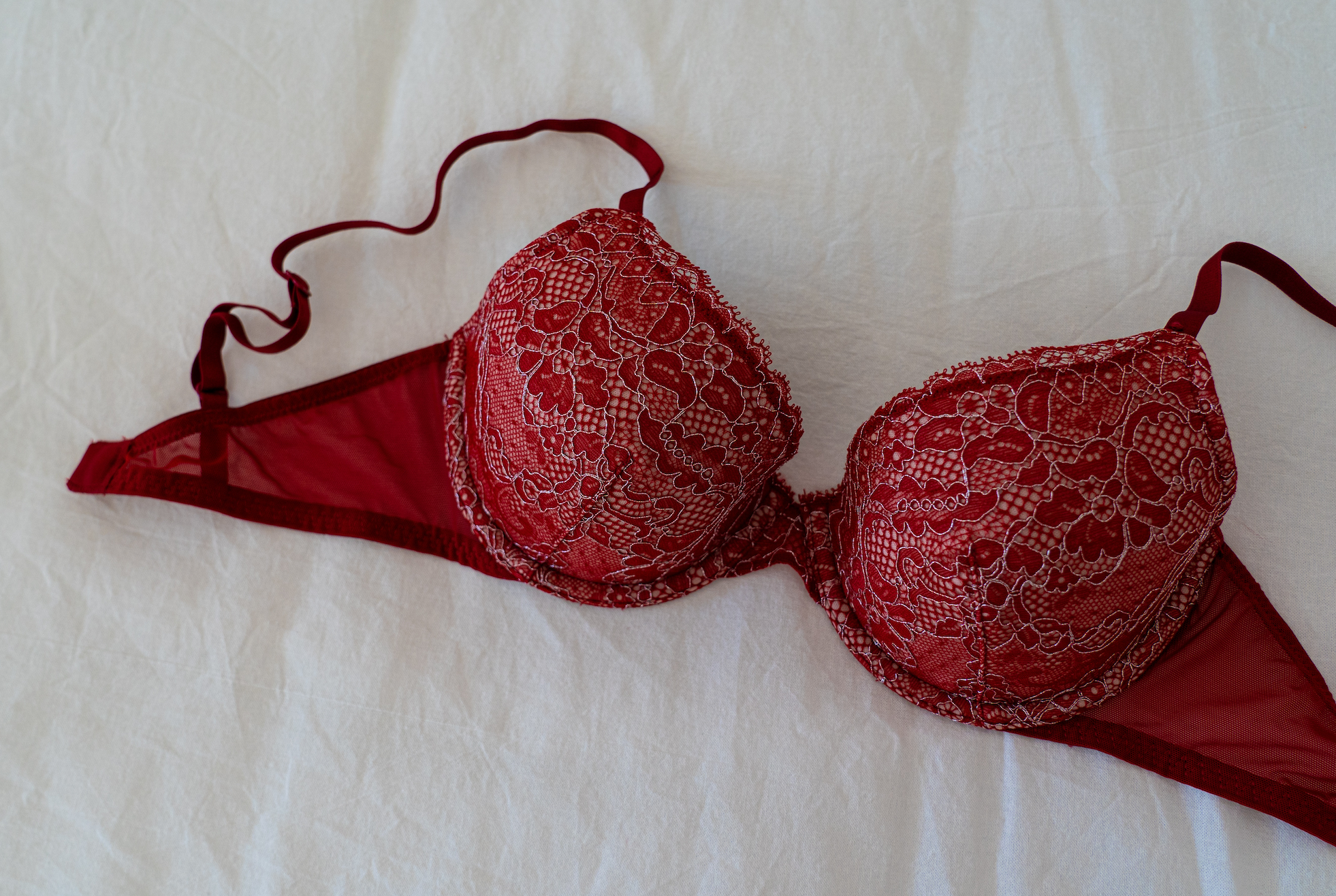If you choose to wear a bra, it’s important to find one that fits you correctly to avoid pain and discomfort. But, bra sizing can be a little confusing! Here’s a breakdown on traditional bra sizing, and some tips to make sure your bras fit the right way:
How does bra sizing work?
Traditional bras have two different components: the band size (also called the underbust) and the cup size. It will often read as a number-letter combination like this: 34B. 34 is your band size, and B is your cup size.
To find your bra size, first find your band size/underbust. You can measure it by wrapping a measuring tape around your body, right under your boobs (basically around your ribcage). The number of inches around your body at that point is your underbust. For accurate measurements, don’t squeeze the tape too tight, and try to keep it level across your front and back. It’s also recommended that you wear no bra or shirt while doing this.
In order to find your cup size, you also have to measure your overbust, which is the number of inches around your chest at its largest point (basically around your actual boobs). First find the right spot to measure, which is where your nipples are. Wrap the measuring tape around you at that “nipple line.” The amount of inches around you at that point is your overbust.
The last thing we have to do is a little subtraction! Find what your overbust minus your underbust equals, and compare it against this key:
1 inch difference = A cup
2 inch difference = B cup
3 inch different = C cup
4 inch different = D cup
Here’s an example: Let’s say my underbust is 34 and my overbust is 35. 35 - 34 = 1. Since there’s a one inch difference, my cup size is an A.
Now just put it together: underbust + cup size = bra size. 34A!
No measuring tape? No problem!
Use any material that can wrap around you but doesn’t stretch. This can be a shoelace, piece of string, or even a phone charging cord. Once you’ve wrapped it around your body, lay it flat and measure the part that was around you using a ruler.
The Problem With Standard Sizing
Boob development can begin as early as ages 8 or 9, but unfortunately the modern bra industry doesn’t cater to this age group very well. Most bras for young people follow what’s called standard sizing: straightforward labels like small, medium, or large. This feels weirdly judgey and doesn’t actually reveal much about how a bra fits, especially if your chest isn’t developed enough to need traditional cups. When looking at bras with standardized sizing, just remember that the bra is supposed to fit you; you are not supposed to fit the bra. Try focusing on which size feels the most comfortable on your body, regardless of what the label says.
P.S. - If you also don’t like standard sizing, we’re with you. It’s one of the reasons why we created the OOMBRA, with our sizing system based solely on the length around your chest instead of cups. For more information on bra sizing and how it relates to the OOMBRA, check out this page on our website!
How should my bra fit?
Your bra should be comfortable! No part of the bra should be digging into your shoulders or other parts of your body, so if you notice deep imprints around your ribcage, your bra might be too tight. Red shoulder marks can also occur if a bra doesn’t have enough support, since the boobs will pull down on the straps.
The band of the bra should be snug against the middle of your back, hitting you above the curve of your waist (basically where your underbust starts in the front). If the bra is riding up to the upper part of your back, it could be too big.
If the bra has clasps, it should also fit well on the middle one, so if you feel most comfortable on the last clasp you may need to go up a size. A quick test to see if your bra is too tight is by using your fingers. Try slipping two fingers vertically under the back band so you’re essentially lifting the band an inch away from your body. You should be able to do this comfortably. If you’re able to fit three or more fingers in this way, your bra might be too loose, but if you can’t even get one it, your bra might be too tight.
When it comes to cups, your boobs should be able to sit in them and fill them. If the cups don’t sit flush against your boobs and there is gaping or space, your cup size is too big or doesn't fit your boob shape very well. If you’re spilling out of the top or sides of the cups, you may need to go up a size. Same goes for if the bra is being lifted off your chest, or if the underwire is on top of your boobs instead of under them.
Remember, all boobs are shaped differently, so it might take a few tries to find the right shape and size for you! That is perfectly fine.




Leave a comment
All comments are moderated before being published.
This site is protected by hCaptcha and the hCaptcha Privacy Policy and Terms of Service apply.